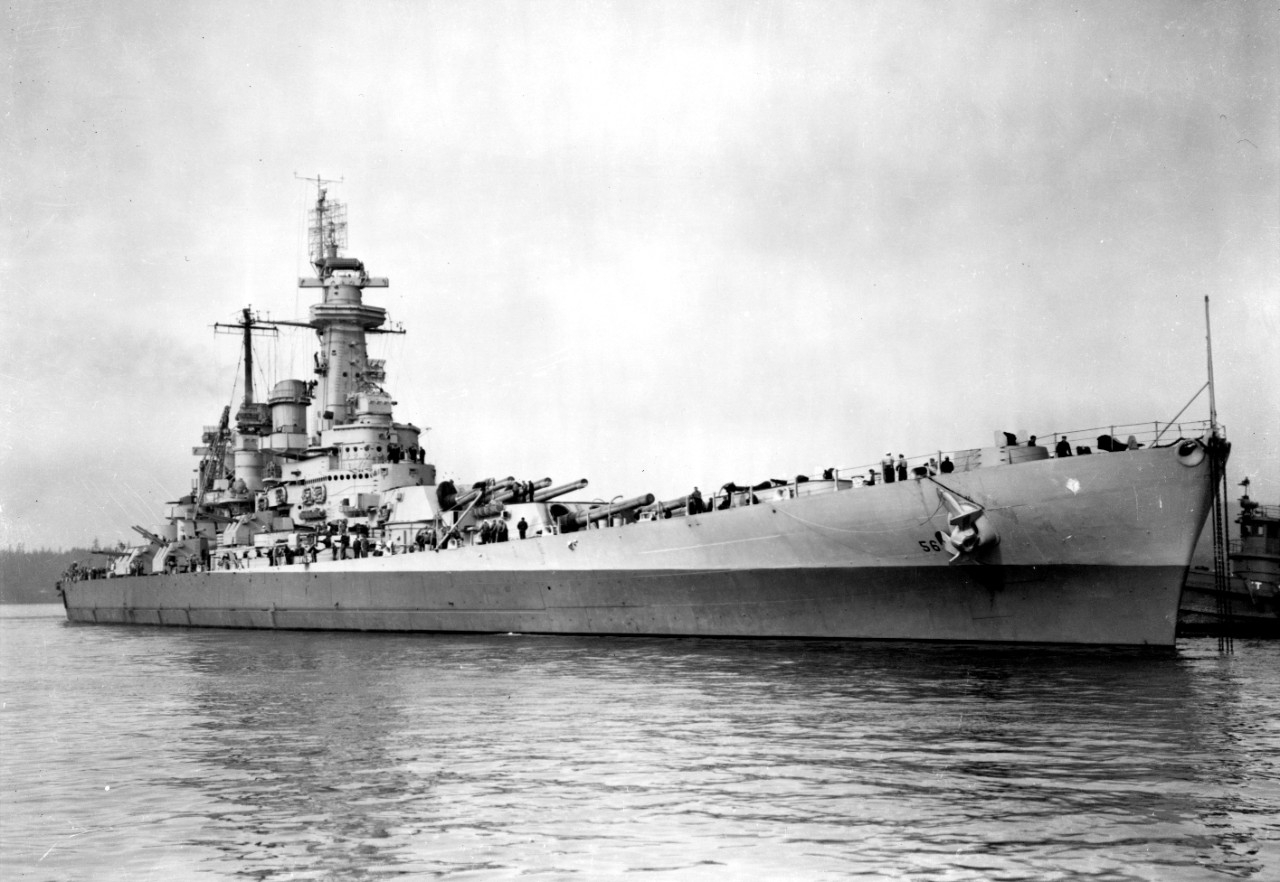
There are not many battles in the history of the naval fleet that have so dramatically demonstrated the combination of technology, strategy, and pure firepower as the nocturnal clash between the USS Washington (BB-56) and the Japanese battleship Kirishima during the Naval Battle of Guadalcanal. Such a showdown was not only a key moment of the Pacific War but also a live demonstration of the performance of radar-guided gunnery and clever ship design, even in the most confused sea battles at night.

Built in 1941, USS Washington was a North Carolina-class battleship that was the zenith of U.S. naval technologies of that era. The ship was designed to meet the restrictions of the Washington Naval Treaty and, therefore, showed a careful balance of armor, weaponry, and speed. With a length of 728 feet and a displacement of over 44,000 tons, the ship was armed with nine 16-inch/45 caliber guns, giving it the ability to fire shells of 2,700 pounds each to very long distances.

Alongside the primary battery were twenty 5-inch/38 caliber dual-purpose guns intended for use against aircraft as well as other vessels. The battleship was heavily armored with a 12-inch main belt and an armored deck ranging from 1.5 to 6 inches thick, designed to resist heavy enemy fire. Washington was propelled by steam turbines up to the speed of 28 knots, which gave her the capacity to be maneuvered with carrier task forces as well as quickly react to changing battle situations.

The confrontation was with the Kongo-class battlecruiser Kirishima, built in 1915 and extensively updated in the 1930s. The changes made to her armor, power, and weaponry transformed the vessel into a powerful battleship equipped with eight 14-inch main guns, 6-inch secondary guns, anti-aircraft weapons, and torpedo tubes. Kirishima was a tough contender as she had already been through a lot of battles from Pearl Harbor to the Solomon Islands.

The battle occurred during the bitter fight for Guadalcanal between August 1942 and February 1943. The island, especially Henderson Field, where the struggle took place, was extremely important. Supporting the Allies, the airfield was required to maintain the supply lines between the U.S., Australia, and New Zealand and was also the base from which air power was exerted on enemy-occupied waters. If Japan had it, on the other hand, holding or taking back Henderson Field would enable her to continue cruising routes that were vital for supplies and also pocket the Allied forces for further moves.

In the middle of November 1942, the Japanese staged a major offensive against Henderson Field with the intention of strengthening their forces. Kirishima’s unit was made up of two heavy cruisers, two light cruisers, and nine destroyers. Vice Admiral William F. Halsey acted promptly and decisively by dispatching Washington and South Dakota, along with four destroyers under the command of Rear Admiral Willis A. Lee, a distinguished expert in gunnery and radar operations, not only separately from the carrier but also with him.

Indeed, the night of 14-15 November 1942 was full of disorder and chaos. The American destroyers, which had been attacked by the Japanese, were swiftly overpowered, resulting g two of thebeingen sunk and several otherbeingen damaged. As a result of being hit by the fires of destroyed ships, USS South Dakota took 26 hits and suffered some severe damage. However, Washington was still concealed in the dark, using smoke and debris to her advantage.

Radar was the turning point. Even in the almost complete dark, crews in Washington could pinpoint and shoot their targets with extraordinary accuracy. When Kirishima was about 8,500 yards away, Washington’s gunners aimed by radar and released an awful broadside of her 16-inch guns. Naval historian Samuel Eliot Morison cited that Washington counted up to 20 hits on Kirishima. The aftermath was horrible: Kirishimo caught on fire, was disabled, and sank later on. Their already wheeled-out attack plan of Long Lance torpedoes also failed, and the other Japanese vessels moved away, leaving only the battleship and a single destroyer behind.

Besides being a mere tactical victory, the sinking of Kirishima was a heavy hammer blow on Japan’s Pacific fleet. This loss of one of its few operational battleships meant that Japan’s capacity to halt Allied control of the area around Guadalcanal was decreased. The combat also marked a turning point in the rapid development of radar and night-fighting abilities, thus signaling a departure from the traditional visual daylight fleet battles.

On top of this, the war brought out the larger changes in the naval conflict beyond the specific skirmish. The decisive element was the adoption of radar-guided fire control, the sophisticated ship design, and the highly cooperative technology. The success of Washington against Kirishima was evidence showing that the integration of innovation with sound tactics could inflict lethal damage and turn the naval power balance.

The war lessons of Guadalcanal were instrumental in the design of warships and naval strategy changes a long time after. Thesped up the conversion from obattleship-centered m to ttlegrounds centered on battleships to carrier-based task forces and in-flight and at-sea operations that were integrated. The heritage of Washington’s triumph is still a forceful example of how the Allies’ combination of inventiveness, flexibility, and strategic brilliance helped them to become the dominant force in the Pacific.
